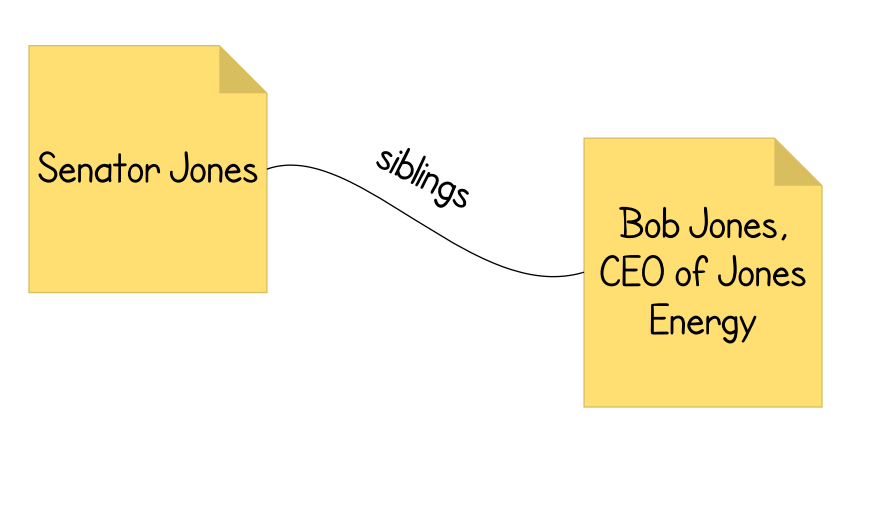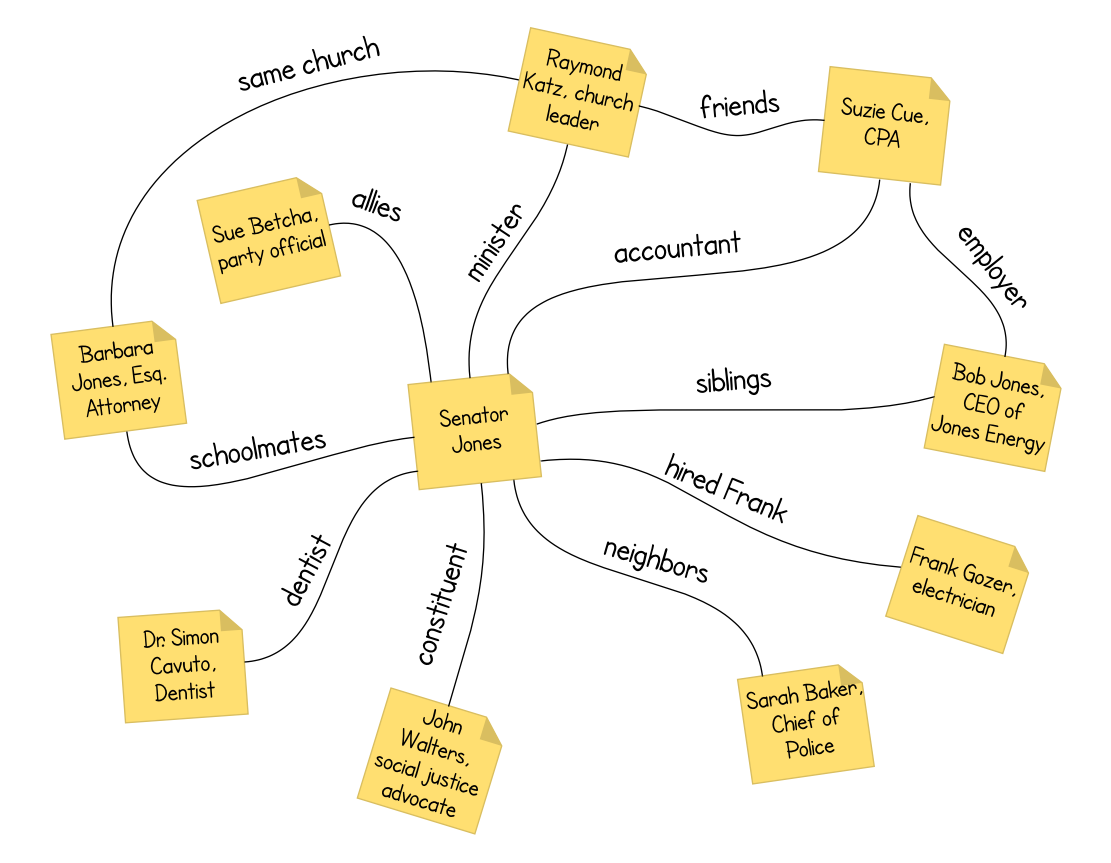As good advocates for change, we have many tools at our disposal. One important tool is called a power map. A power map helps us identify decision-makers and understand all the forces acting on them — like constituents; personal and professional relationships; special interest groups; other advocacy organizations; and political party leaders; among others.
This web of influence is often difficult for the average citizen to understand. The lines of influence between these players are always evolving, and the reasons behind a legislator’s position on any given subject may not be — probably won’t be — based on a purely rational assessment of the issue’s pros and cons. For us to have a chance of nudging our legislators in the right direction, we have to understand the forces at play.
There are a few simple steps to creating an effective power map:
- Determine your goal or policy objective.
- Identify the right target for your efforts.
- Brainstorm the people and institutions that know and interact with your target.
- Determine the nature of the relationship between your target and the people who influence them.
- Make a plan of action.
What’s Your Goal?
Before starting any campaign, your team must determine what success looks like. What is your ultimate goal? At this stage, your team should stay focused on identifying the problem, not specific solutions. For example, if you and your team are worried about a proposed tax cut and the effect it might have on vital services, you may have a pretty good idea of what your goal is already. You probably want the legislature to see the light and vote against the tax cut. However, an important aspect of determining your goal is to not jump to conclusions about what the best solution might be. There may be a dozen different ways to accomplish the goal of funding services. Squabbling over the details early on is a great way to blunt the power of your team, because you end up directing your energies against each other instead of the real decision-makers.
Who Can Make It Happen?
Next you need to identify who the real decision makers are. Often this will be a legislator, a city councilor, or some other elected official, but your target may be any individual or group that has the power to effect change in the policy. Depending on what your specific goal is, the focus of your efforts could be a prominent citizen, a journalist, or the head of a state agency or private institution. For larger and more complicated goals, consider whether success depends on targeting multiple individuals or even an entire institution. Picking the right target is often a simple task, but sometimes a little research is needed to find out who the correct target should be. As you build your power map, you may discover that the individuals you thought were in charge aren’t. Like the Wizard of Oz, there might be a someone you don’t expect who is really pulling the strings. When this happens, keep your map flexible, add the true decision maker to your power map, and refocus your efforts on the “man behind the curtain.”
Brainstorm as a group
As a group activity, power mapping is a great way to build consensus and communicate a plan of action to your team. It helps focus your efforts, and it can shift meetings from complaining about a problem into making a productive plan of action.
The most crucial skill when power mapping in a group is to understand the process of brainstorming. Brainstorming is about getting ideas out and recorded. It is not about the quality of the ideas. It’s not the time to criticize, make negative comments or stifle input. You want every team member contributing. Using sticky notes to record every idea (one note = one idea), create a comprehensive list of influences on the target.
Let’s say your team goal is to get your state senator to vote against an upcoming tax cut. The state senator is your target. Now is the time for you and your team to brainstorm all the forces acting on the senator. Find out everything you can about him and consider what people and institutions are connected to him. These may include:
- Family members
- Friends
- Current and former colleagues in school, business, sports, or the military
- Companies the senator may have done business with or worked for
- Major employers in the state and especially in the senator’s district
- Media (including newspapers, television and web outlets, whether or not they tend to favor or criticize your target)
- Social media (not just the platform, i.e. Facebook or Twitter, but also the individual social media actors that the senator has historically responded to)
- Community groups and activists
- Nonprofits and charities
- Churches and other religious organizations
- The senator’s political party and important party officials
Map the relationships
Armed with this list of actors, you can begin to create a power map diagram. If you have a white board, now is the time to use it! Begin by placing the target in the center of your diagram and arrange your sticky notes around the target. Draw lines between the target and the actors on your sticky notes. These lines indicate that the actor has influence over the target. We call them relational lines of power. On the line, you can briefly describe the type of relationship between the actor and the target (see Diagram 1).

You may notice right away that the various actors may have connections to each other, not just to the target. Draw relational lines of power between the various actors as well as to the target. Some actors will have many connections to both the target and other actors. These nodes of power are important influencers of both the target and other influencers. Take note of who they are.
Create a Plan of Action
Your diagram should look something like Diagram 2, a messy web of interconnected nodes and relational lines of power. Every line coming from your target leads to an individual or group that has some measure of influence over the target. Every line leading to your target is a string that you can pluck.

You can use your power map to identify who you should contact, who should get to know you, and who you need to get on your side. Ideally, mapping the relationships will turn up someone connected to your target who is also connected with you or your allies. Maybe you’re not ready to directly persuade your target, but you are ready to reach out to this person or group connected to him. For the most important campaigns, this may be a multi-step process where you have to start with someone well removed from the ultimate decision-maker. But if you can convince all your target’s friends, family and business associates, getting your target to come around to your point of view is much easier.







